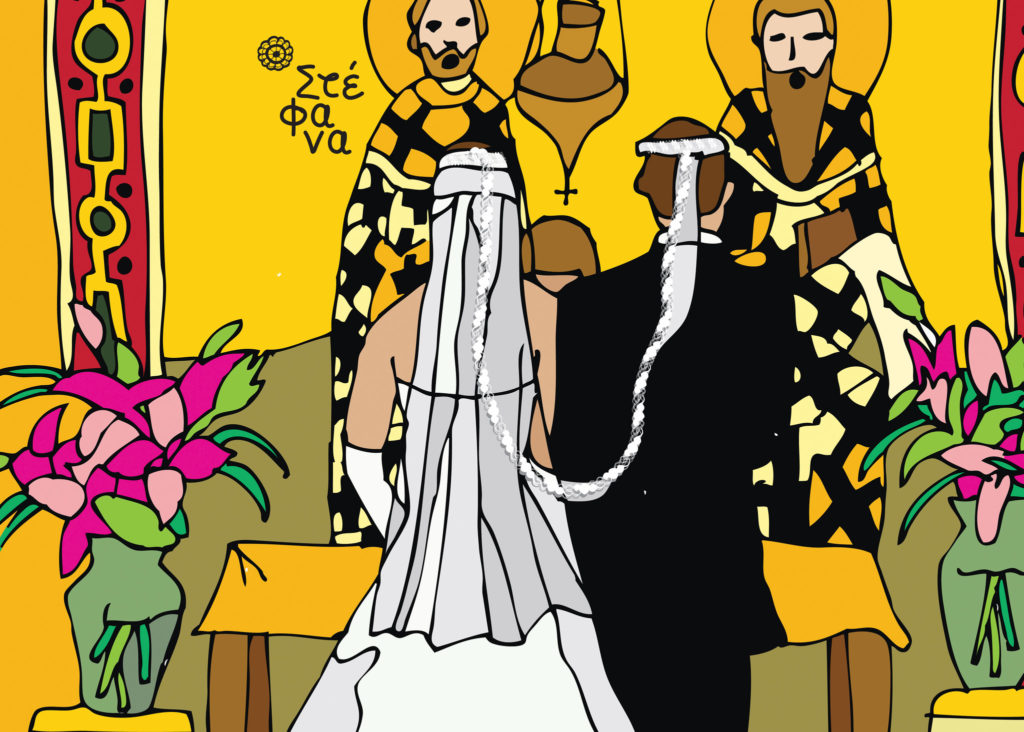A poignant way to represent what changes during marriage is to exchange stefana on the heads of the couple. This is a unity ceremony that touches on the additional roles and responsibilities being placed upon those who are being wed. Widely used in Greek orthodox ceremonies, these wreaths have roots that can be traced back long before Christianity was developed.

Some comments on word usage: stefana is the plural form of stefanos; “stefanas” is always incorrect. The plural is the more common word to see in this context, because for weddings, they come in pairs. It’s also redundant to use “stefana crowns,” since the word means “garland” or “crown.” Greek words are written using a different alphabet, and for that reason this one is sometimes translated using the spelling “stephana,” but that’s not nearly as common.
In a Greek orthodox wedding, the priest places a stefanos on the head of the groom, and then intones a prayer three times that celebrates that man’s* role as a servant to that religion’s central deity. A second stefanos, which is attached to the first with a long ribbon, is placed on the bride’s head with a similar invocation. The crowns remain in place for the remainder of the ceremony, and traditionally for some time after that. Once woven of flowers or other plants, stefana in the 21st century are more likely to be long-lasting keepsakes fashioned of much more durable materials, including silver and gold.
The use of wreaths to crown individuals dates back into the ancient period of Greek history, and perhaps earlier.
*The gendered language describing Greek orthodox weddings is intentional. Same-sex weddings were legalized in Greece in February, 2024, but church leaders opposed the change. To my understanding, same-sex unions are not available in any Greek orthodox church, anywhere on the planet. The theological basis for that position is clearly important to adherents of that faith. Rest assured your officiants at Weddings in the Gunks are not ordained through that church. If you wish to incorporate this tradition to honor your spiritual or cultural heritage, then your ceremony will include those elements—it’s as simple as that.
